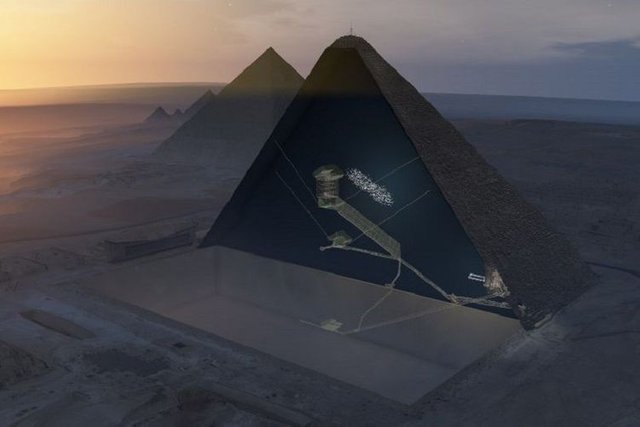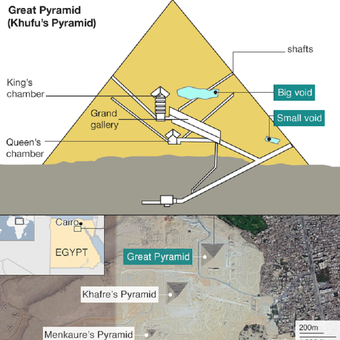Archaeologists Find the Secret Space of a Plane in the Giza Pyramids
Archaeologists announce the secret room of a passenger plane at the Giza pyramid, one of the most untouched pyramids of nearly 4,500 years.
Described in a report published in the journal Nature on Thursday (2/11/2017), researchers have previously found three rooms in the Giza pyramids, namely the grand gallery, the king's room, and also the queen's room.
However, when charting the three rooms, the team of archaeologists detected a large void above the grand gallery connecting the king and queen rooms.
The empty space is the same size as the great gallery, which is at least 30 meters long.
"There are many theories about the existence of a secret space within the pyramid, but no one thinks it will be this big," said Mehdi Tayoubi, one of the researchers involved.
To detect this secret room, a team of archaeologists led by Kunihiro Morishima of Nagoya University using muons, high-energy particles generated when cosmic rays collide with the atmosphere.
This technique is used to explore the great pyramids without moving a single stone. The reason, the muon can penetrate deep into the rock and is absorbed at different levels depending on the density of the stone.
By placing muon detectors in and around the pyramid, the team of archaeologists can see how much material the particle skips.
"If there is more mass, fewer muons will reach the detector," said Christoper Morris, who used a similar technique to describe the internal structure of a nuclear reactor, quoted by New Scientist, Thursday (2/11/2017).
"If there is no mass, more muons reach the detectors," he continued at Los Alamos National Laboratory.
By seeing the amount of muons arriving at different locations within the pyramid and the angle at which they traveled, Miroshima and his team mapped the cavities inside the ancient structures. "What they see is pretty sure," Morris continued.
Even so, it takes drilling and cameras to determine whether the cavity is a structural or vacant space caused by a long-forgotten crash.
Muon himself was chosen because the technique will not damage a historical site, says Peter Der Manuelian, an Egyptian history expert at Harvard University.
In 1970, a team of archaeologists led by Luis Alvares also used muon radiography to map the Giza pyramids. But at that moment, they did not detect any new space.
If confirmed, this room will be a new discovery of the great pyramids after more than a century.
"I look forward to working with the Egyptian antiquities authorities for further exploration to work, and research on the pyramids has been a long one, so every new contribution is always a fun addition to knowledge," Manuelian said.


Source: http://sains.kompas.com/read/2017/11/03/190600123/arkeolog-temukan-ruang-rahasia-sebesar-pesawat-di-piramida-giza
Not indicating that the content you copy/paste is not your original work could be seen as plagiarism.
Some tips to share content and add value:
Repeated plagiarized posts are considered spam. Spam is discouraged by the community, and may result in action from the cheetah bot.
Creative Commons: If you are posting content under a Creative Commons license, please attribute and link according to the specific license. If you are posting content under CC0 or Public Domain please consider noting that at the end of your post.
If you are actually the original author, please do reply to let us know!
Thank You!
More Info: Abuse Guide - 2017.
Thanks for posting. I saw an an article the other day, but your explanation of the technique used helps make sense of it. Thanks